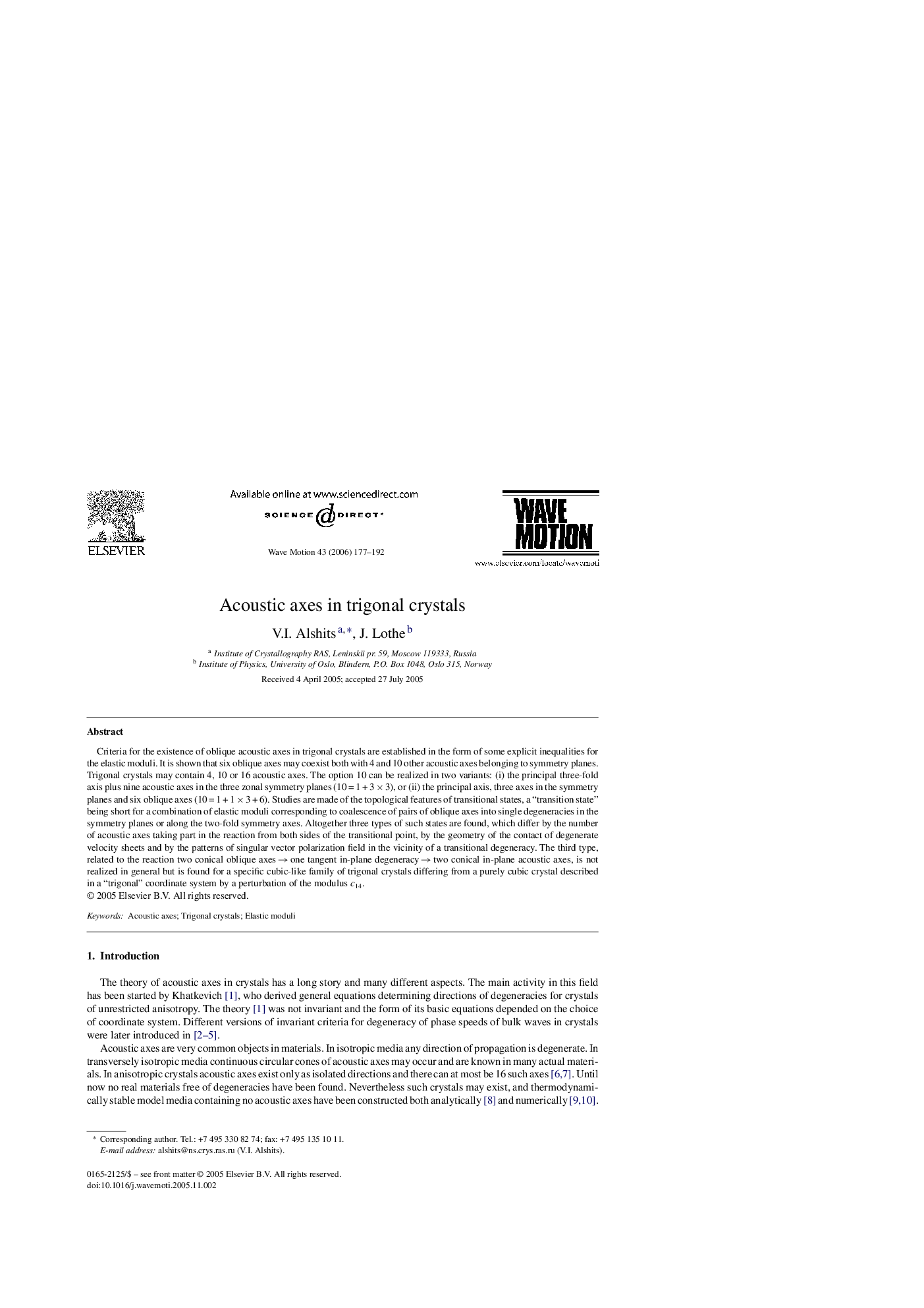| Article ID | Journal | Published Year | Pages | File Type |
|---|---|---|---|---|
| 1900757 | Wave Motion | 2006 | 16 Pages |
Criteria for the existence of oblique acoustic axes in trigonal crystals are established in the form of some explicit inequalities for the elastic moduli. It is shown that six oblique axes may coexist both with 4 and 10 other acoustic axes belonging to symmetry planes. Trigonal crystals may contain 4, 10 or 16 acoustic axes. The option 10 can be realized in two variants: (i) the principal three-fold axis plus nine acoustic axes in the three zonal symmetry planes (10 = 1 + 3 × 3), or (ii) the principal axis, three axes in the symmetry planes and six oblique axes (10 = 1 + 1 × 3 + 6). Studies are made of the topological features of transitional states, a “transition state” being short for a combination of elastic moduli corresponding to coalescence of pairs of oblique axes into single degeneracies in the symmetry planes or along the two-fold symmetry axes. Altogether three types of such states are found, which differ by the number of acoustic axes taking part in the reaction from both sides of the transitional point, by the geometry of the contact of degenerate velocity sheets and by the patterns of singular vector polarization field in the vicinity of a transitional degeneracy. The third type, related to the reaction two conical oblique axes → one tangent in-plane degeneracy → two conical in-plane acoustic axes, is not realized in general but is found for a specific cubic-like family of trigonal crystals differing from a purely cubic crystal described in a “trigonal” coordinate system by a perturbation of the modulus c14.
